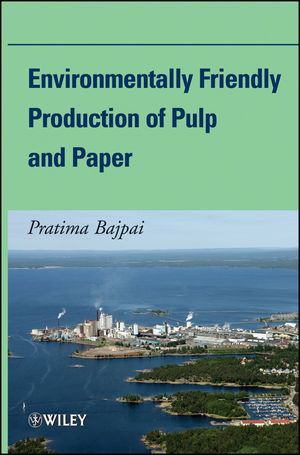

Most ebook files are in PDF format, so you can easily read them using various software such as Foxit Reader or directly on the Google Chrome browser.
Some ebook files are released by publishers in other formats such as .awz, .mobi, .epub, .fb2, etc. You may need to install specific software to read these formats on mobile/PC, such as Calibre.
Please read the tutorial at this link: https://ebookbell.com/faq
We offer FREE conversion to the popular formats you request; however, this may take some time. Therefore, right after payment, please email us, and we will try to provide the service as quickly as possible.
For some exceptional file formats or broken links (if any), please refrain from opening any disputes. Instead, email us first, and we will try to assist within a maximum of 6 hours.
EbookBell Team

4.3
38 reviewsThe large—and still growing—pulp and paper industry is a capital- and resource-intensive industry that contributes to many environmental problems, including global warming, human toxicity, ecotoxicity, photochemical oxidation, acidification, nutrification, and solid wastes. This important reference for professionals in the pulp and paper industry details how to improve manufacturing processes that not only cut down on the emission of pollutants but also increase productivity and decrease costs.
Environmentally Friendly Production of Pulp and Paper guides professionals in the pulp and paper industry to implement the internationally recognized process of Cleaner Production (CP). It provides updated information on CP measures in:
Raw material storage and preparation
Pulping processes (Kraft, Sulphite, and Mechanical)
Bleaching, recovery, and papermaking
Emission treatment and recycled fiber processing
In addition, the book includes a discussion on recent cleaner technologies and their implementation status and benefits in the pulp and paper industry.
Covering every aspect of pulping and papermaking essential to the subject of reducing pollution, this is a must-have for paper and bioprocess engineers, environmental engineers, and corporations in the forest products industry.Content:
Chapter 1 Introduction (pages 1–7):
Chapter 2 Overview of Pulp and Papermaking Processes (pages 8–45):
Chapter 3 Environmental Issues of the Pulp and Paper Industry (pages 46–61):
Chapter 4 Emissions from Pulp and Papermaking (pages 62–109):
Chapter 5 Cleaner Production Measures in Pulp and Paper Processing (pages 110–263):
Chapter 6 Recent Developments in Cleaner Production (pages 264–344):